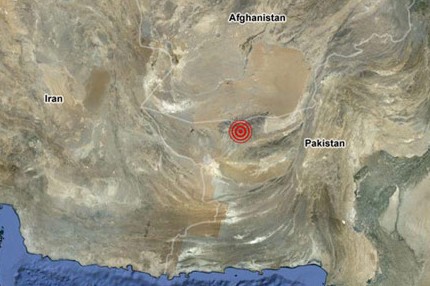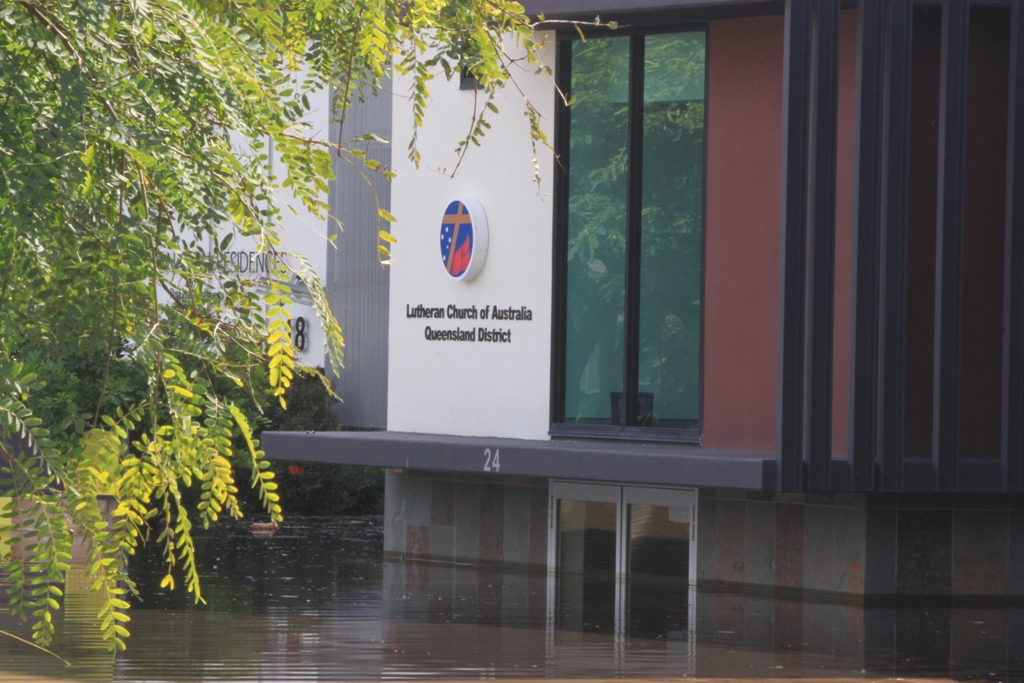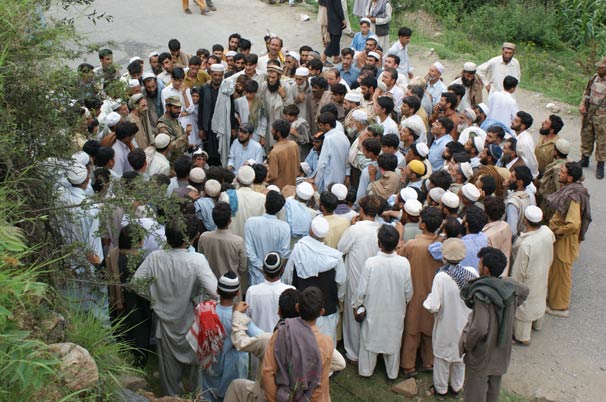Water rose a meter a minute, said Nazer is sitting in front of his tent, his face like a mask of stone. The 50 year old father of four still cannot believe what happened. Within just four or five minutes, the flood levels in his village in northwest Pakistan rose up to four metres. The young man sitting beside him, Mujahid Gul, looks around at the village – or what remains of it – and says people are happy simply to have survived.
Massive rain since the end of July has caused Pakistan’s worst floods. The village of Zareen Abad with its 500 houses is still under water. Said Nazer and the other inhabitants settled on higher ground on the brink of the village. In the graveyard, they live in tents and under plastic sheeting.
Under no circumstances do they want to leave their village. Instead, they want to start clearing the debris as soon as possible. But before they can start, the water has to completely drain. For that, flood victims need pumps and generators. As Nauman Shah, coordinator of ACT Alliance member Diakonie Katastrophenhilfe, says, this should happen as soon as possible. Otherwise, the water will destroy the brick houses totally.
Although his house is at the brink of the village and still partly under water, Shah Saeed has already started repairing the roof. The father of five cannot just sit and wait. Underneath, household goods, including mattresses and furniture, are rotting in the water. Gone also are the villagers’ cattle. Nearly all buffalo, goats and hens are dead, Nauman says. He believes the number of dead people could rise to 1000 in Nowshera district alone. Some of the still-flooded houses must contain bodies, he believes.
Also in the neighbouring village of Pashtoon Gari, the river Kabul, which has flooded most of the low-lying land, brought destruction with it. Water 4m high ran through the village and left devastation. Fagir Sheer, a 30 year old labourer, is trying to salvage some of his belongings from the mud and debris. But there is not much that he can use anymore. How he will manage to rebuild his house, in which he was living with his mother and brother, he has no clue.
Fagir Sheer, as with many other villagers, is still in shock. Daily labourers like himself have lost their work because the fields around the village are totally covered by water. A field with sugar cane, for example, is totally devastated. Most fields are still under water. In some places, the remains of cattle lie in the water. Sometimes when it is too hot, the smell is very bad. For four days the water stayed 4m high, says Abdul Saboor Khan. Out of 1700 houses, 400 were totally destroyed. Most of the others are damaged. He is glad that Diakonie Katastrophenhilfe and its local partners are supporting the villagers. The need for help is immense, judging by the extent of destruction.
By Rainer Lang, DKH-ACT
 A 7.2 earthquake has hit a remote area of southwestern Pakistan. Today’s quake was centered in Baluchistan, Pakistan’s most sparsely populated area, according to the US Geological Service. The quake’s epicenter was centered in a remote area about 200 miles, or 320 kilometers, southwest of the Baluchistan capital of Quetta, the Associated Press reported. The quake was felt in several neighboring provinces and in major cities, including Karachi. Police from Karachi report no damage or loss of life as of now.
A 7.2 earthquake has hit a remote area of southwestern Pakistan. Today’s quake was centered in Baluchistan, Pakistan’s most sparsely populated area, according to the US Geological Service. The quake’s epicenter was centered in a remote area about 200 miles, or 320 kilometers, southwest of the Baluchistan capital of Quetta, the Associated Press reported. The quake was felt in several neighboring provinces and in major cities, including Karachi. Police from Karachi report no damage or loss of life as of now.


